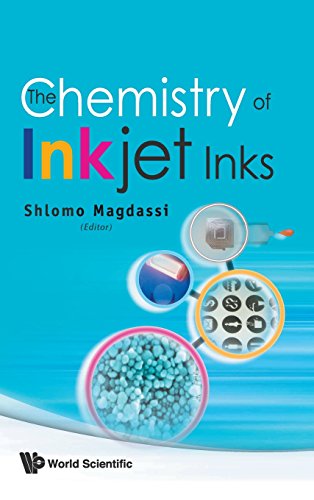The Chemistry of Inkjet Inks ebook
Par bass wendy le dimanche, juillet 17 2016, 11:06 - Lien permanent
The Chemistry of Inkjet Inks by Magdassi S.


The Chemistry of Inkjet Inks pdf download
The Chemistry of Inkjet Inks Magdassi S. ebook
Page: 339
ISBN: 9812818219, 9789812818218
Format: pdf
Publisher: WS
For us, it's the close look at modern inkjet print heads that was the most interesting. (Phys.org) —A team of researchers working at China's University of Science and Technology has succeeded in developing a chemical mapping technique capable of revealing the constituent atoms of a single . HP invest an incredible amount of resources to their print technology, with advances in print head and ink technology heavily patented and protected. This precision requires multi-disciplinary skills – a combination of careful design, implementation and operation across physics, fluid mechanics, chemistry and engineering. In a nutshell, the chemistry between the ink and the paper you use to print a photo influences its lightfastness, according to Kodak scientist Douglas Bugner in his article How Long Will Inkjet Prints Last? Lee Rannals for redOrbit.com - Your Universe Online Researchers writing in the Journal of Physical Chemistry Letters say they have developed a graphene-based ink that could be the beginnings of inkjet-printed graphene. Most folks with classifiy these as a normal lab. There are at least 10 major ingredients in inkjet ink. Some of which are: 1.) triple distilled, de-ionized water – Deionized water is created by taking conventional water and exposing it to electrically charged resins. It turns out that common cartridges have an overly high-resolution for this to work well. The chemical based prints are made all over the world at the one hour photo stores, etc. (Phys.org) —Using an ink containing tiny graphene flakes, scientists have inkjet-printed graphene patterns that can be used for printing finely detailed, highly conductive electrodes. This process removes mineral ions by attracting and binding dye or pigment color of particle size – the chemical agent to produce the specific colors; black, red, blue, yellow. One company claiming a better battery — that is, the chemistry for a better battery — is ZPower, using silver-zinc, which, according to ZPower, can pack 40% more juice, and be safer to use and dispose of.